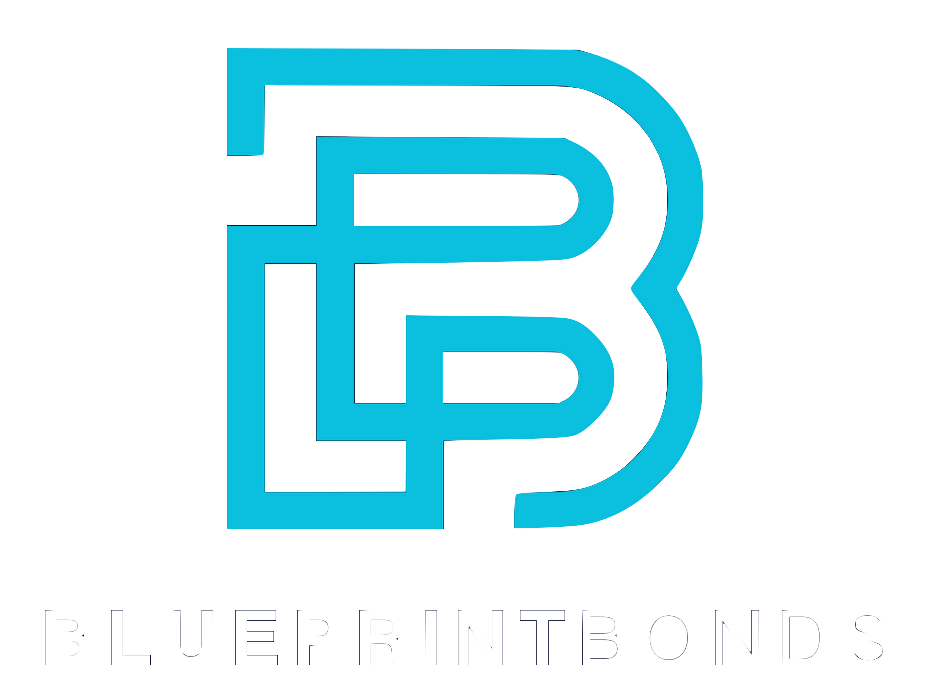For many businesses, bonding is often viewed as a necessary evil—a compliance requirement that adds cost and complexity without clear benefit. Yet this perspective misses a crucial point. Bonding is not just a regulatory checkbox; it can serve as a powerful lever for growth, trust-building, and competitive advantage. In fact, companies that embrace bonding strategically often find it opens doors to new opportunities, improves governance, and strengthens customer confidence.
Understanding bonding’s role beyond compliance is essential for leaders aiming to navigate today’s regulatory landscape while fueling business expansion. Recent studies highlight that compliance challenges remain a major barrier to growth, with 63% of companies citing this as a critical obstacle. However, reframing bonding as a growth enabler rather than a hurdle can help businesses unlock value rather than just manage risk. Research from Fyllo and The Harris Poll underscores how outdated compliance processes can stall momentum, but modern approaches to bonding can be different.
Bonding as a Trust Builder in Competitive Markets
Bonding acts as a financial guarantee that a company will fulfill its contractual obligations, which inherently builds trust with clients, partners, and investors. This trust is especially critical in industries where project delivery and financial stability are closely scrutinized. When businesses secure bonds, they send a clear signal that they are credible and capable of managing risks effectively.
For small and medium-sized businesses, maintaining steady bonding rates over the past decade reflects consistent demand from clients and regulators alike. This consistency shows that bonding remains a valued assurance mechanism rather than just a bureaucratic step. According to Blueprint Bonds, small business bonding rates have remained stable, indicating ongoing confidence in bonding as a tool for business reliability.
Moreover, bonding can differentiate a business in crowded markets. When clients see a bonded company, they often feel more comfortable awarding contracts, especially in sectors like construction, environmental services, and government procurement. This trust can translate directly into business growth opportunities.
In addition to enhancing credibility, bonding also fosters a culture of accountability within organizations. Companies that prioritize bonding often implement rigorous internal controls and project management practices to ensure compliance with the terms of their bonds. This not only protects their financial interests but also reinforces their commitment to delivering high-quality work. As a result, bonded companies tend to cultivate a reputation for reliability, which can lead to repeat business and referrals, further solidifying their market position.
Furthermore, the bonding process itself can serve as a valuable learning experience for businesses. Engaging with bonding agents and underwriters encourages companies to assess their financial health, operational capabilities, and risk management strategies. This introspection can lead to improved business practices, as organizations become more aware of their strengths and weaknesses. By embracing the bonding process, companies not only enhance their trustworthiness in the eyes of stakeholders but also position themselves for long-term success in an increasingly competitive landscape.
Compliance Costs and Strategic Investment in Bonding
It is no secret that compliance-related expenses can weigh heavily on company budgets. A 2024 report by Vanta reveals that 78% of organizations now allocate dedicated cybersecurity budgets, with over a third dedicating between 6% and 10% of their IT spend to compliance-related needs. While this statistic focuses on cybersecurity, it reflects a broader trend: companies are investing more to meet regulatory demands.
Viewing bonding as a cost center misses its potential as a strategic investment. Rather than simply absorbing bonding expenses, companies can leverage bonds to secure larger contracts or enter new markets that require bonding as a prerequisite. This proactive approach turns bonding from a compliance hurdle into a growth enabler.
In fact, companies that integrate bonding into their growth strategy often find that the upfront costs pay off through expanded business opportunities and enhanced reputation. This mindset aligns with Chad Bronstein, CEO of Fyllo, who pointed out that outdated compliance processes derail growth, implying that modern, integrated compliance tools—including bonding—can support scaling efforts rather than hinder them. Fyllo’s insights highlight the need for updated approaches that align compliance with business goals.
Moreover, the shifting landscape of regulatory requirements means that companies must remain agile and responsive. As industries evolve, new regulations emerge, often requiring businesses to adapt quickly to maintain compliance. This adaptability can be a significant advantage for companies that view bonding not merely as a regulatory obligation but as a strategic tool to enhance their market positioning. For instance, in sectors such as construction or environmental services, having the right bonding in place can be the differentiator that allows a company to bid on high-value projects that competitors cannot access.
Additionally, the relationship between bonding and risk management cannot be overlooked. By securing the appropriate bonds, companies can mitigate potential financial losses associated with project failures or non-compliance penalties. This risk management aspect of bonding not only protects the company's assets but also fosters trust with clients and stakeholders, reinforcing the notion that a well-bonded company is a reliable partner. As businesses strive to build long-term relationships and a solid reputation in their industries, the strategic use of bonding becomes increasingly critical in navigating both opportunities and challenges in the marketplace.
Bonding and Corporate Governance: The Bonding Hypothesis
Beyond financial assurance, bonding also plays a role in corporate governance. Research by Lel and Miller (2006) supports the “bonding hypothesis,” which suggests that firms from countries with weaker investor protections that cross-list on major U.S. exchanges improve governance by, among other things, terminating poorly performing CEOs more readily. While this study focuses on cross-listing, the principle applies broadly: bonding mechanisms can serve as governance tools that align management incentives with shareholder interests.
By requiring bonding, stakeholders encourage companies to maintain higher standards of accountability and performance. This governance effect can indirectly support growth by promoting efficient management and reducing risks associated with poor leadership or mismanagement.
In this way, bonding is more than a financial instrument; it is a mechanism that fosters transparency and discipline, which are essential for sustainable growth. Firms that embrace bonding as part of their governance framework often gain investor confidence and enjoy better access to capital markets.
Moreover, the bonding hypothesis highlights the importance of cultural factors in corporate governance. In countries where investor protections are traditionally weak, the act of cross-listing can signal a commitment to higher standards of corporate behavior. This cultural shift not only enhances the reputation of the firm but also encourages a more robust dialogue between management and shareholders, fostering an environment where feedback is valued and acted upon. As firms adapt to these new governance expectations, they often find themselves more attuned to the needs and concerns of their investors, leading to a more harmonious relationship that benefits all parties involved.
Additionally, the implications of bonding extend beyond individual firms to influence entire markets. As more companies adopt these governance practices, the overall investment climate in a region can improve, attracting foreign investment and stimulating economic growth. This ripple effect can lead to a more competitive business environment, where firms strive to innovate and improve their practices to meet the heightened expectations of investors. Consequently, the bonding hypothesis not only serves as a framework for understanding corporate governance on a micro level but also sheds light on its potential to transform market dynamics on a macro scale.
Industry Trends Driving the Importance of Bonding
Several industries are experiencing growth in bonding-related markets due to increasing safety and regulatory demands. For example, the global grounding and bonding systems market for racking is projected to reach USD 6.1 billion by 2033. This growth is driven by heightened emphasis on electrical safety and compliance with evolving regulations. Market analysis from DataIntelo illustrates how bonding-related products and services are becoming integral to regulatory compliance and operational safety.
This trend underscores a broader shift: bonding is no longer a niche or optional practice but a central part of meeting industry standards and protecting stakeholders. Companies that anticipate and integrate bonding requirements early can position themselves as leaders in safety and compliance, which supports growth by attracting clients who prioritize risk management.
Additionally, environmental and safety experts emphasize that while industry volunteerism in hazard data generation is valuable, government oversight remains crucial. John Balbus of Environmental Defense highlights the need for monitoring, tracking, and validation to ensure safety outcomes. This insight reinforces the idea that bonding and compliance are interconnected with broader regulatory ecosystems that protect business and public interests.
Moreover, the rise of renewable energy technologies is also contributing to the increased focus on bonding practices. As solar and wind energy installations proliferate, the need for effective grounding and bonding systems becomes paramount to ensure the safety and efficiency of these systems. The integration of advanced monitoring technologies, such as IoT devices, allows for real-time assessment of bonding integrity, further enhancing safety protocols. This technological advancement not only improves compliance with existing regulations but also fosters innovation within the industry, as companies seek to develop smarter, more efficient bonding solutions.
In addition to technological advancements, the growing awareness of climate change and its impact on infrastructure is prompting industries to reassess their bonding practices. Companies are now more inclined to invest in sustainable materials and methods that not only comply with safety regulations but also contribute to environmental stewardship. This shift towards sustainability is driving the development of eco-friendly bonding agents and systems that minimize environmental impact while maintaining high safety standards. As stakeholders increasingly demand transparency and responsibility, businesses that adapt to these evolving expectations are likely to thrive in a competitive market.
Small Business Confidence and Bonding as a Growth Tool
Small businesses, especially micro-SMBs with annual revenues of $150,000 or less, are showing growing confidence in their ability to survive and thrive. A 2025 study found that 75% of these businesses are very or extremely likely to survive the next two years. This optimism is crucial because it suggests a readiness to invest in tools that support growth, including bonding. The study from PYMNTS reflects a positive outlook among small businesses that can be leveraged by bonding providers and advisors.
For small businesses, bonding can unlock access to contracts that might otherwise be out of reach. Government projects, construction jobs, and other opportunities often require bonding as proof of financial stability and reliability. By securing bonds, small businesses can compete on a more level playing field with larger firms. This competitive edge is particularly important in industries where contracts are awarded based on a combination of price and proven capability, allowing smaller enterprises to showcase their unique strengths and personalized service offerings.
Moreover, bonding helps small businesses manage risk by providing a financial safety net in case of disputes or claims. This risk management aspect can provide peace of mind, allowing business owners to focus on growth initiatives rather than potential liabilities. In addition to financial security, the process of obtaining a bond often involves a thorough review of the business's operations and financial health, which can lead to valuable insights. This introspection can help small business owners identify areas for improvement, streamline their operations, and ultimately enhance their overall business strategy.
Furthermore, the benefits of bonding extend beyond just access to contracts and risk management. It can also enhance a small business's reputation in the marketplace. When clients see that a business is bonded, it signals a commitment to professionalism and accountability. This perception can lead to increased trust and credibility, which are essential for building long-term relationships with clients and partners. As small businesses continue to navigate the complexities of the market, bonding emerges as a vital tool not just for survival, but for sustainable growth and success in an increasingly competitive landscape.
Practical Steps to Leverage Bonding for Growth
To shift the perception of bonding from a compliance burden to a growth lever, businesses should adopt a strategic approach:
- Integrate bonding into business development: Identify contracts and markets where bonding is a competitive advantage and actively pursue those opportunities.
- Educate stakeholders: Help clients, partners, and employees understand the value of bonding beyond compliance, emphasizing trust and reliability.
- Streamline bonding processes: Use modern tools and partnerships to reduce the administrative burden and cost of obtaining bonds.
- Align bonding with risk management: Treat bonding as part of a broader risk mitigation strategy that protects the business and supports sustainable growth.
By taking these steps, companies can transform bonding from a perceived obstacle into a strategic asset that fuels expansion and builds lasting relationships.
Before You Go: Key Takeaways on Bonding and Growth
Bonding is far more than a regulatory requirement. It is a critical component of trust, governance, and competitive positioning that can unlock new growth pathways. While compliance challenges remain a barrier for many, rethinking bonding as a strategic tool rather than a hurdle can help businesses thrive in complex markets.
Stable bonding rates among small businesses, growing industry markets related to bonding, and increasing confidence among micro-SMBs all point to bonding’s enduring relevance. Leaders who embrace bonding proactively will find it easier to secure contracts, manage risks, and build credibility with stakeholders.
Ultimately, bonding should be viewed as an investment in the company’s future—one that supports growth, governance, and resilience in an increasingly regulated world.
Frequently Asked Questions
Q: What is bonding in a business context?
A: Bonding is a financial guarantee that a company will fulfill its contractual obligations, providing assurance to clients and partners.
Q: How does bonding help small businesses grow?
A: Bonding allows small businesses to qualify for contracts that require financial guarantees, opening doors to new opportunities and markets.
Q: Is bonding just a compliance requirement?
A: No. While bonding is often required by regulations, it also builds trust, supports governance, and can be a strategic growth tool.
Q: Why are bonding rates stable for small businesses?
A: Stable bonding rates reflect consistent demand and trust in bonding as a reliable assurance mechanism over the past decade.
Q: How can companies reduce the burden of bonding?
A: Streamlining bonding processes through technology and partnerships can lower costs and administrative effort, making bonding easier to manage.
Q: Does bonding improve corporate governance?
A: Yes. Bonding can promote accountability and transparency, aligning management incentives with stakeholder interests.




